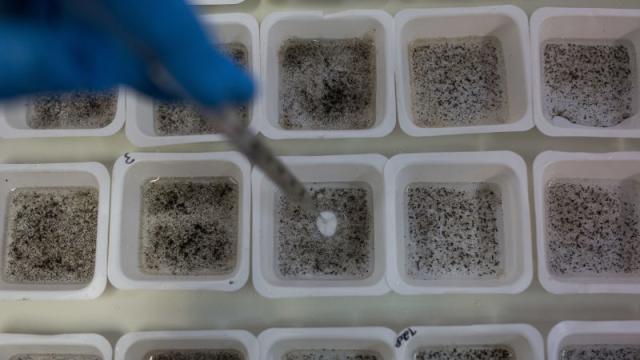A powerful and controversial new genetic engineering technology called a gene drive offers the potential to drastically reshape our world by overriding natural selection. And the US military’s research arm is among one of the technology’s biggest research funders.
One day scientists could use technology like gene drive to engineer away pests like mosquitoes. IMAGE: Getty Images
It’s no secret that the Defence Advanced Research Projects Agency has its eye on gene drive technology. Last year, the agency launched a program aimed at developing a sort of Ctrl-Z function for gene editing that would allow scientists to undo their genetic work should they make an unfortunate mistake and better understand gene editing technologies’ function. In July, DARPA announced seven research teams that would be the recipients of a total $US65 million ($85 million) in grants, with gene drives one of the major focuses of the research.
DARPA’s interest in gene drives – and what exactly the sometimes secretive agency plans to do with them – is making headlines again this week after an anti-gene drive advocacy group published a trove of emails from gene drive researchers obtained through a Freedom of Information Act request. The emails come as a United Nation committee meets this week in Montreal to discuss, among other things, how to address gene drives at the UN’s Convention on Biological Diversity next year in Egypt.
The involvement of the US military in such a technology has understandably raised concerns. A gene drive works by overriding natural selection’s typical 50-50 mix, ensuring that a desired trait introduced by genetic engineering more efficiently spreads through a wild population. Among other things, this technique might be used to engineer invasive pests to breed themselves out of existence. Earlier this year, New Zealand signalled it was interested in the gene drives as a potential solution to its problem with invasive species (pending much, much more research of course). If it works outside of lab environments, the gene drive could eventually become a massively powerful technology, allowing for the potential of genetically altering an entire species.
The ETC Group, which published the emails, said that the rapid development of this technology is a concern it hoped to shed light on.
“The speed with which those developments are scaling up is often presented in terms of carefully crafted speculative conservation and health benefits while the overwhelming military interest driving these developments, while not hidden, has been very much downplayed,” Jim Thomas, the group’s head, told Gizmodo via email.
DARPA, though, has not been shy about its real interest in gene drive technology – and that it isn’t conservation. In fact, the agency even seems to share some of the ETC Group’s concerns.
“The science of gene editing, including gene drive technology, has been advancing at a rapid pace in the laboratory,” DAPRA told Gizmodo via email. “These leaps forward in potential capability, however, have not been matched by advances in the biosafety and biosecurity tools needed to protect against potential harm if such technologies were accidentally or intentionally misused, nor does data exist on how such technologies would actually function in the far more complex real world.”
DARPA is afraid of what might happen if something goes awry, whether nefariously or by accident. And it isn’t the only party voicing that concern. Last month, one of the pioneering scientists behind the prospect of using CRISPR to create a gene drive published what he called a “mea culpa”, arguing that the technology is nowhere ready for primetime. He said safe guards are needed to prevent it from spreading uncontrollably in the wild.
The seven teams that DARPA is funding under its Safe Genes program are primarily conducting fundamental research. A team at The Broad Institute is developing the means to switch on and off genome editing, including the control of gene drives in mosquitoes. A Massachusetts General Hospital team is looking at better ways to measure the on-target and off-target effects of gene editing, with a focus also on a mosquito gene drive. An MIT team is looking at how to geographically limit the spread of a gene drive and potentially reverse it. Five of the funded teams are working directly on biosafety and biosecurity measures for gene drive technologies, the other teams focused on gene editing more broadly.
The concern, of course, is that a military organisation like DARPA could turn around and take those those technologies for offensive measures – maybe, say, a gene drive that destroys an enemy’s crops. It’s potentially scary technology. It’s easy to let the imagination run wild. In the released emails, its clear that the funded scientists are aware of the image of DARPA as just the kind of shadowy government organisation that would do such a thing.
ETC Group argues that DARPA’s crime is that it hasn’t been transparent enough. (For one, it claims that the agency is actually spending $US100 million [$131 million] on the technology based on a comment made at a launch event for the program. DARPA says that is a misinterpretation of the statement and the original $US65 million [$85 million] figure is correct.)
What is certainly clear from the documents, though, is that DARPA has a hand in most of the significant research into gene drives in the US. And that the military takes very seriously the potential for a world-altering technology to become a serious threat.
